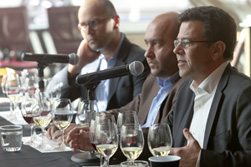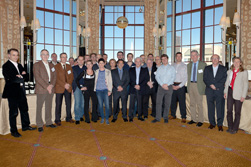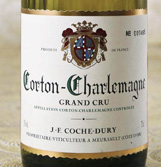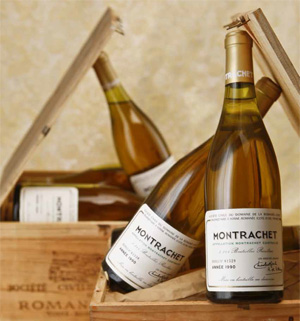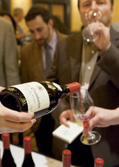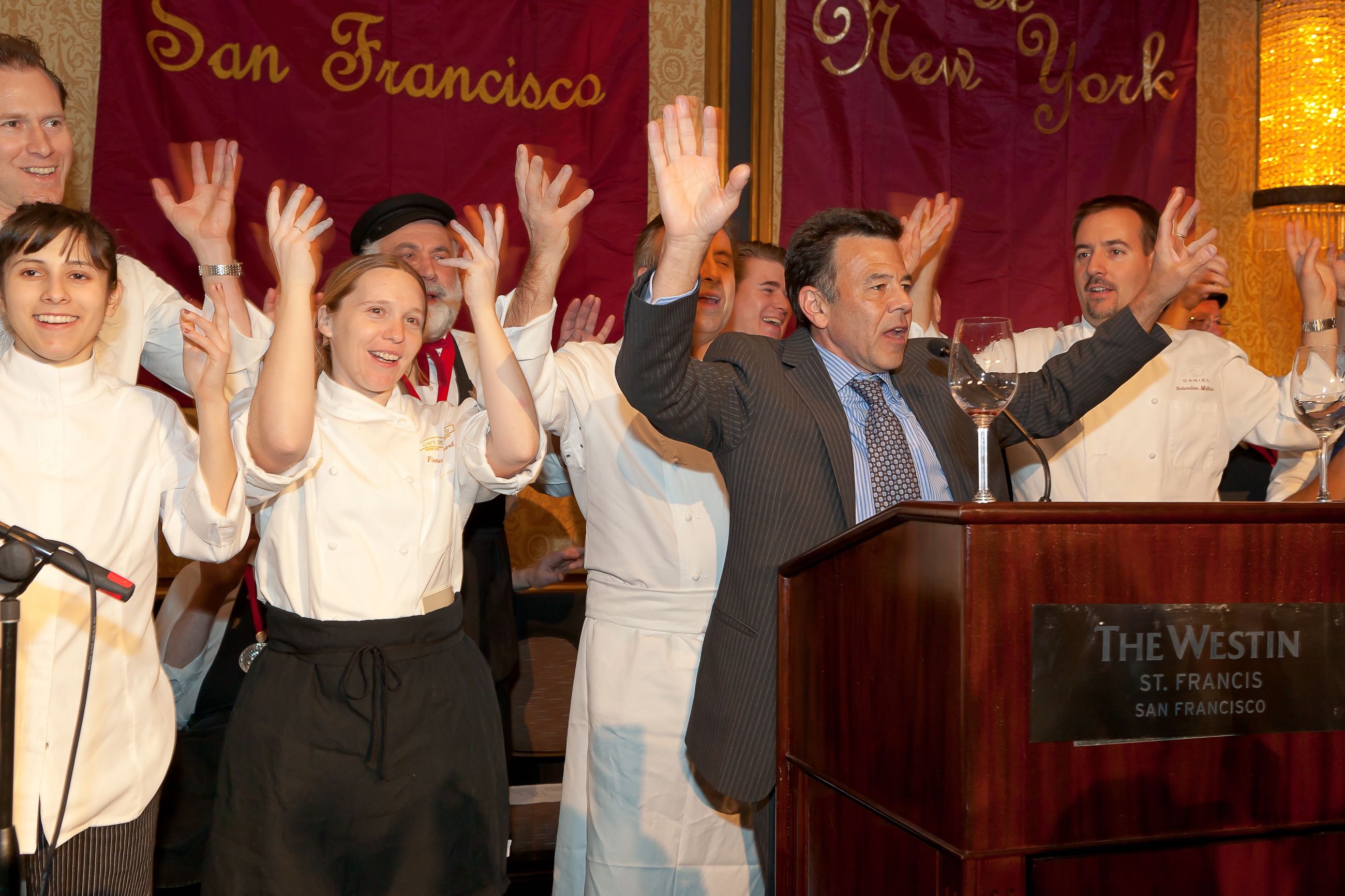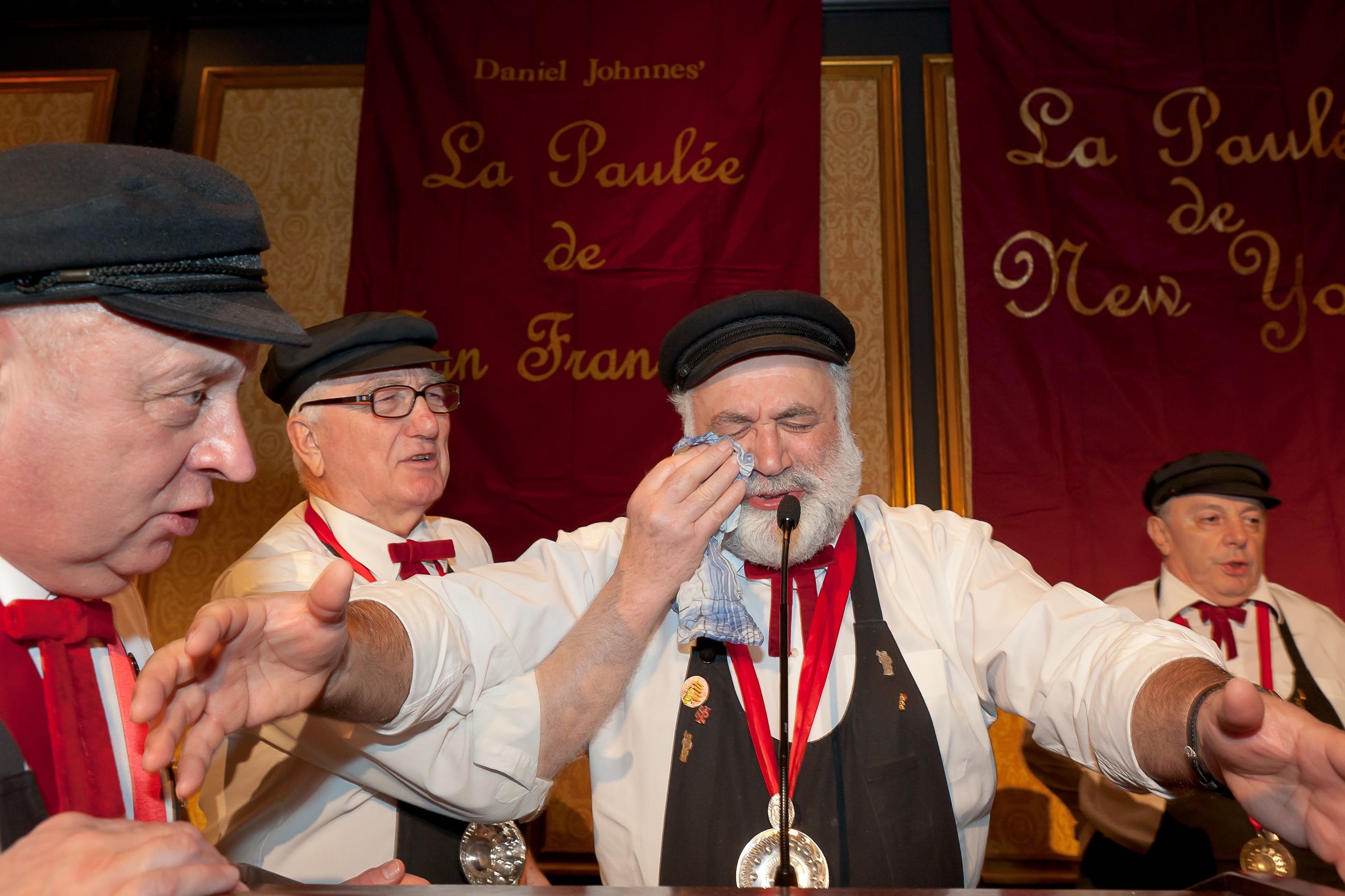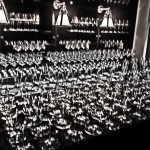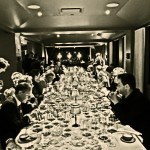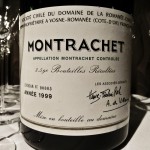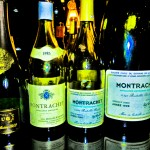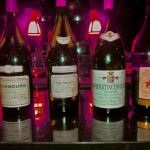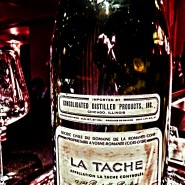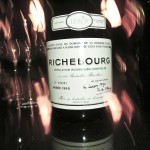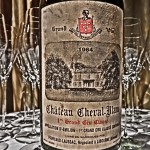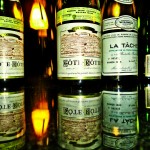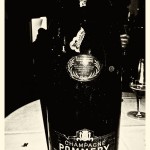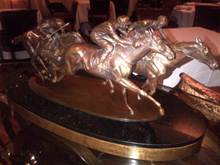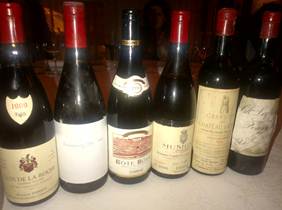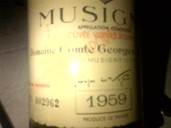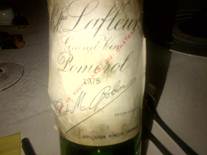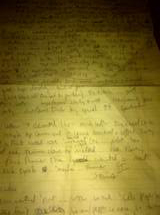Night two was a more intimate affair, hosted by Wilf again. There tends to be a theme when I am in San Francisco, and it usually centers around Wilf and his restaurant, RN74. I tend to be a creature of habit when I find something I like, and RN74 is definitely one of my favorite places for a good meal and great wine.
La Paulee 2012 – Second Coming
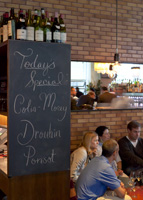
RN 74 – My Kind of Place
Hollywood Jef has had a knack for popping up at the most glamorous wine events of the year in 2012, and he was already there once I arrived, drinking a rare and delicious 1969 Mercier Reserve de L’Empereur. It reminded me of old DP, even though it was a Blanc de Blancs. It was delicious with vanilla and burnt sugar flavors. ‘Love it,’ went the notes (94).

Rare Mercier
A 1990 Dom Perignon that followed was tough to drink thereafter. It was pungent and grassy, and despite being very fresh and with a great finish, I wanted to go back to the Mercier. It ain’t easy to go young after you’ve gone old, at least for wine (92+).
A pair of Leflaives guided us off the runway beginning with the 1999 Leflaive Chevalier Montrachet. There was a big dose of sulfur at first, but behind that smoke, citrus and bright, fresh fruit. There was great game and spice to this buttered banana of a nose. The palate was big up front but surprisingly soft and tender on its finish. Etienne de Montille was with us for dinner, and he remarked that ‘1999 was not a great vintage for white. It lacks a little energy’ (93).
The 1996 Leflaive Chevalier Montrachet wasn’t lacking much. Its nose was super intense, full of acid and smoke. Its fruit was starting to show some mature yellow traces, not a bad thing. The palate was tasyy, still fresh and showing that signature 1996 acidity. Wintry and yellow flavors balanced well in this outstanding white (96).
Chevalier, meet Batard. An exercise in terroir followed with the 1996 Leflaive Batard Montrachet. The nose was much milder with more rainwater, garden and meaty, yellow aromas underneath. It was softer and more subtle, but still solid. I guess Batards should always get served before Chevaliers (94).

A Trio of Leflavives
A 1996 Fleurot-Larose Montrachet was fruity and ‘cauliflower soup,’ per someone. It was pungent and unexciting, average at best (85).
A 2007 de Montille Puligny Montrachet Caillerets was a personal favorite of Wilf’s for ‘just drinking,’ and it had a great nose with caramel and butter toffee aromas. It was smooth and tasty, with full flavors and a full finish. Etienne is doing some special things these days, and is a winemaker to watch in Burgundy (92+).
It is still a red, red world, so we obliged with a 1989 Leroy Richebourg. The ’89 had a smoky, peaty nose with a touch of latex to its date and purple fruit aromas. Its flavors were light beef, big grape, dark fruit and black forest. ‘Rustic ratatouille’ wrapped up my notes for this excellent and big-boned red (93).
1989 DRC La Tache? Ok, why not. Any night where a bottle of La Tache is opened is officially special. Its nose was very perfumed and open, although there was some dirty underneath, one of the issues with ’89. The palate was much more expressive than the nose with its rich, meaty and earthy personality. Its finish was thick and showed me its peacock tail. Insert your own joke here (94).
The DRC parade continued with a 1986 DRC Romanee St. Vivant. 1986 has provided me some great surprises over the years at the top level; typically its reputation is hard, tannic, acidic and not a lot of fruit. The RSV was a little mildewy at first, but musk and cereal emerged along with dark fruit. There was this dirty side again to the ’86, but its palate and dry finish were impressive. It stood toe-to-toe with the La Tache (94).
We went back to Leroy with a 1978 Leroy Mazis Chambertin, which was a beauty. It was feminine and tender, some kind of wonderful with its pretty, smooth and satiny sides. Pure, fine, feminine again, that’s all she wrote (94).
1996 was the main event on this night, and DRC and Leroy went head to head again, beginning with a 1996 DRC La Tache. Its nose was intense, with all the screech of 1996, aka acidity. The inevitable mint and spice came second, along with cedar and green wood. The palate was finally starting to show some flesh and fruit; the knock on the vintage is the opposite. The great acidity of 1996 shone through, along with forward strawberry flavors. Jean-Marc Roulot found it ‘powerful yet elegant’ and preferred the LT to what followed (96).
So did I, but it was an ‘Any Given Sunday’ thing more than a ‘Smackdown.’ The 1996 Leroy Chambertin had everyone talking, from ‘more opulent’ to ‘masculine’ to ‘verve tannins.’ It was nutty, brothy, thick and creamy. 1996 is a vintage that plays into Leroy’s style well, although this was perhaps a bit too muscular and a touch stemmy if looking for flaws (95).
We went back to DRC for an Echezeaux showdown, and the 1996 DRC Echezeaux delivered a show-stopping performance. The nose was milder at first, with a bit of soap and perfume, then rubber and vinyl. Green wood, wet bamboo and red citrus all joined the nose, along with shoe polish. Its palate was thick and in a sweet spot, ‘one of the best DRC Ech’s ever,’ I wrote. It was really showing its stuff, but I neglected to write down a score, oops. Factoring in math, science and history, this would be in the (94+) territory.
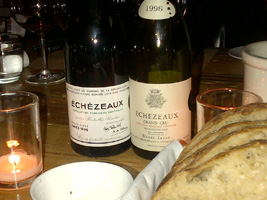
Echezeaux Death Match
The 1996 Henri for Georges Jayer Echezeaux that followed was spectacular. I always find this wine (George’s bottling) to be one of the best values in finest and rarest Burgundy, because according to Martine Saunier, long-time importer, this was always the same wine as Henri, even when there were two labels, which there weren’t after some time in the early 1990s anyway. People pay so much more when George’s name isn’t on the label, but the smart money is on the Georges. The nose was full of that deep purple, Jayer fruit. The palate had unbridled power and breadth, with enough vitamin supplements for a pro-Football team. ‘Red twizzler’ came from the crowd for this bright and pleasure-giving red (96+).
I made a quick trip to go see Agent Eli, who was at the other end of the restaurant holding court with Jean-Marie Fourrier. I got a taste of an incredible 1985 Ponsot Clos St. Denis Vieilles Vignes. This was a wow wine, with incredible concentration, almost freakishly so. In fact, I wrote ‘crazy’ three times. Thicker than Brazilian thunder thighs, the Ponsot almost defied Burgundy with its mammoth personality, yet its flavors still paid respect to the region’s history. Impressive (97).

Jean-Marie Fourrier at RN74
I think I can, I think I can…as soon as I saw the 1962 Leroy La Romanee, I knew I could. Alexander the Great found ‘ash of the fire,’ and here was another great nose, with red fruit, dust, zip and tender earth. The palate was milky and tender, round and lush. As my beautiful, 2-year old daughter Katerina might say, ‘Duhlishussss’ (95).
By now, we were all up and about, stumbling, some bumbling. Wild Bill, one of San Francisco’s local wine sheriffs, had a bottle of 1998 DRC Montrachet in his hand, ready to fire. I referenced this bottle in the Nomadness article; a bottle of this a month definitely keeps the doctor away. This bottle was Botrytis City, which felt like a block away from Alphabet City with much higher rent. It wasn’t too far over the top despite its honeyed and Caramelo Anthony sweetness. It tasted great and was more filling with its coconut cream flavors (95).
That was enough for me for night number two, as there was still one more night left, the grandest of them all.
In Vino Veritas,
JK

